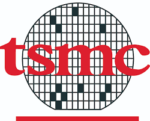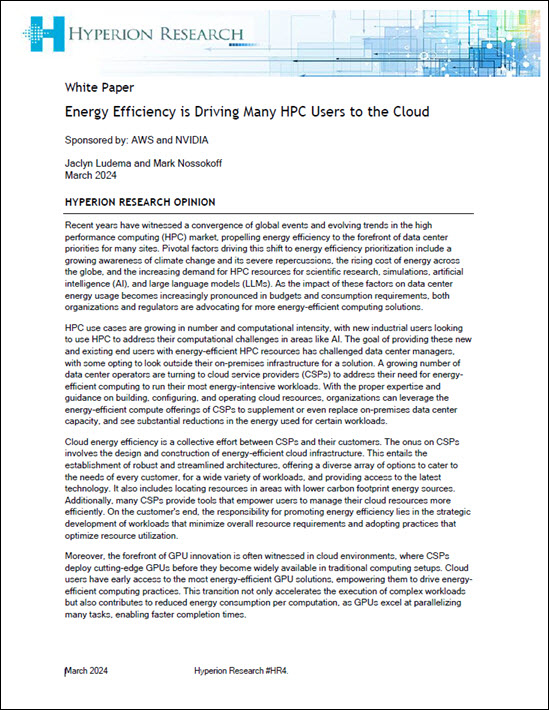Post-exascale supercomputing for the NNSA (National Nuclear Security Administration) is the subject of a new report by a distinguished review committee comprised of notable supercomputing experts, three of whom presented their findings at a webinar last week. Among other observations Shahin and Doug came away with is that those responsible for guiding U.S. supercomputing leadership on the global stage are under relentless pressure, in an increasingly challenging environment, to make mistake-free, long-term strategic choices. Their task is like that of Sisyphus, except the boulder never rolls down the mountain, it must eternally be pushed up. As one of the panelists — Dan Reed of the University of Idaho — said, “in supercomputing, these are the best of times and the worst of times.”
@HPCpodast: Supercomputing Strategists Look out 20 Years at the Post-Exascale HPC Future
Mythic Raises $13M for Edge AI Inference
Austin – March 9, 2023 – AI processing company Mythic has raised $13 million in a new round of funding. Mythic’s existing investors Atreides Management, DCVC, and Lux Capital contributed to the round, along with new investors Catapult Ventures and Hermann Hauser Investment (which is led by Hermann Hauser, one of the founders of Acorn Computers and […]
Intel Launches Intel Agilex 7 FPGAs
March 6, 2023 — Intel has launched new FPGAs, the Agilex 7 FPGAs with F-Tile, equipped with what the company said are the fastest FPGA transceivers on the market. Designed to address bandwidth-intensive environments such asdata centers and high-speed networks, the FPGAs deliver up to 116 gigabits per second (Gbps) and hardened 400 gigabit Ethernet […]
TSMC Offers Its FinFET Technology to Academia for IC Design Skills Development
HSINCHU, Taiwan, R.O.C., Feb. 3, 2023 – TSMC today announced the launch of its “TSMC University FinFET Program,” aimed at developing future IC design talent for the industry and empowering academic innovation. The program will provide broad educational access for students, faculty and researchers to the process design kit (PDK) of TSMC’s fin field-effect transistor […]
@HPCpodcast: Our Favorite 2023 Predictions, Puncturing the Myths of HPC and New Advanced Chips
In our opening episode of 2023, Shahin and Doug discuss the recent chip announcements from Intel and AMD and their implications for HPC. We also talk about are industry predictions for the year to come featured in this article on insideHPC — including the ones we think most interesting. We also discuss a recent paper from researchers in Japan and Europe — led by Satoshi Matsuoka of the RIKEN Center for Computation Science — on the 12 myths and legends of HPC, a buffet for thought.
Israeli AI Startup NeuReality Raises $35M Series A
Dec. 6, 2022 — NeuReality, an AI hardware startup specializing in AI inferencing platforms, announced a $35M Series A funding round led by Samsung Ventures, Cardumen Capital, Varana Capital, OurCrowd and XT Hitech. SK Hynix, Cleveland Avenue, Korean Investment Partners, StoneBridge, and Glory Ventures also participated in the round. The round brings NeuReality’s total funding to […]
SC22: CXL3.0, the Future of HPC Interconnects and Frontier vs. Fugaku
HPC luminary Jack Dongarra’s fascinating comments at SC22 on the low efficiency of leadership-class supercomputers highlighted by the latest High Performance Conjugate Gradients (HPCG) benchmark results will, I believe, influence the next generation of supercomputer architectures to optimize for sparse matrix computations. The upcoming technology that will help address this problem is CXL. Next generation architectures will use CXL3.0 switches to connect processing nodes, pooled memory and I/O resources into very large, coherent fabrics within a rack, and use Ethernet between racks. I call this a “Petalith” architecture (explanation below), and I think CXL will play a significant and growing role in shaping this emerging development in the high performance interconnect space.
Cerebras Announces 2 AI Partnerships – for Large Language Model Training and ‘Generative AI’ Content Creation
Cerebras Systems, maker of the “dinner plate sized” AI processor, announced two alliances today, one with Cirrascale Cloud Services, provider of deep learning solutions for AVs, NLP and computer vision, and with Jasper, maker of an AI content platform for AI-based copywriting and content creation. Under the Cirrascale-Cerebras partnership, the two companies announced the availability […]
TOP500: Frontier Maintains Big Lead, Europe at Nos. 3 and 4, China Quiet
The new TOP500 list of the world’s most powerful supercomputers, released today at the SC22 conference in Dallas, while short on surprises underlines several significant HPC trends. First the headline: the HPE-built, AMD-powered Frontier system, which was crowned the world’s first exascale-class system when the previous TOP500 list was released last spring, remains at the top of the list, delivering nearly three times the power of its nearest rival on the list. Frontier remains at 1.102 exaFLOPS….












